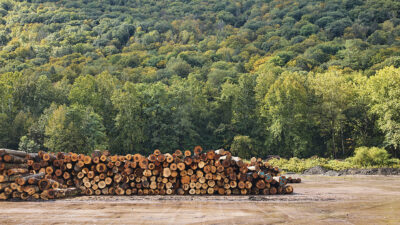For more than 100 years, NOFMA certification has provided a mark of distinction for wood flooring. NWFA’s NOFMA certification program provides assurance that wood flooring meets industry standards for grade, configuration, moisture content, and average board length.
The U.S. Department of Commerce, Federal Housing Authority, and Veteran’s Administration adopted NOFMA in 1966 as the standard for the entire wood flooring industry. In 2008, NOFMA merged with the National Wood Flooring Association, which now administers the program.
Participation in the program is voluntary. Participating mills commit to manufacturing their products to meet minimum quality standards for appearance and milling tolerances. These mills undergo a minimum of two inspections annually to ensure their production lines meet the standards for wood flooring grades.
During the inspections, flooring bundles are examined to ensure that guidelines are being met for both appearance and configuration. Configuration tolerances are measured at the time of manufacture only, as measurements will change due to the gain or loss of moisture. The percentage of bundles inspected is proportional to the number of bundles produced in that mill per grade. For example, if a mill produces 60 percent Select and Better, then 60 percent of the bundles inspected will be Select and Better.
Unfinished solid wood flooring has configuration guide lines for width, match position, match fit, end match, thickness, and overwood.
The board width must be within 0.01″ of the stated width at the time of manufacture.
The match position must be less than or equal to 0.008″.
The match fit must be 0.003″–0.016″ between the tongue thickness and the groove width.
For end squareness of products less than 3″ wide, no more than 5 percent of the product can be greater than 0.016″ out-of-square. For products greater than or equal to 3″ wide, no more than 5 percent of the product can be greater than 0.005″ per inch of width out-of-square.
The board thickness must be 3/4″, plus or minus 0.015″.
The overwood for NOFMA No. 1 Common and Better will be 0.02″ maximum. The overwood for NOFMA No. 2 Common will be 0.03″ maximum.
Factory finished solid wood flooring has configuration guidelines for width, match position, match fit, end match, thickness, bevel, and overwood/underwood.
Boards less than 3″ wide must be within 0.005″ of the stated width at the time of manufacture. Boards greater than or equal to 3″ wide must be within 0.008″ of the stated width at the time of manufacture.
The match position must be less than or equal to 0.008″at the time of manufacture.
The match fit must be 0.003″–0.012″ between the tongue thickness and the groove width. The tongue thick ness should be 0.025″. This measurement can range from 0.004″ under, or up to 0.008″ over. The groove width should be 0.025″, and can vary by up to 0.012″ over at the time of manufacture.
For end squareness of products less than 3″ wide, no more than 5 percent of the product can be greater than 0.016″ out-of-square. For products greater than or equal to 3″ wide, no more than 5 percent of the product can be greater than 0.005″ per inch of width out-of-square. End squareness applies to products that have been properly end matched and products with no end match.
The thickness of 3/4″ boards must be 0.725″–0.76″. The thickness must be within 0.005″ inch for each specific product. It should be noted that the thickness of each individual manufacturer’s product will vary due to the differences in the thickness of the board at the time of unfinished manufacture, the amount sanded off, and the thickness of the finish.
Bevel tolerances are proprietary to individual manufacturers and apply only to factory finished products. The bevel must be the same throughout the entire product. Generally, a standard beveled edge should be greater than 0.045″, micro-bevels should be greater than 0.025″ and less than or equal to 0.045″, and an eased edge should be less than or equal to 0.025″.
The overwood and underwood tolerance is a manufacturer tolerance, not an installed tolerance. For boards that have a beveled edge and a beveled or square end joint, no more than 0.014″ of overwood or underwood is permitted. For boards with a micro-beveled edge and a beveled or square end joint, no more than 0.012″ of overwood or underwood is allowed. For a board with a square edge and end joint, no more than 0.01″ of overwood or underwood is permitted.
Factory finished solid wood flooring will be manufactured between 6 – 10 percent moisture content at time of manufacture. No more than 5 percent of the boards may be outside of this range.
In addition to the configuration guidelines, unfinished solid wood flooring also has moisture content guidelines. Unfinished solid wood flooring will be manufactured at 6 – 9 percent moisture content at time of manufacture. No more than 5 percent of the boards may be outside of this range with a moisture content no higher than 12 percent. The National Wood Flooring Association has detailed information about the NWFA/NOFMA mill certification program available through NWFA University, an online training platform that is convenient and affordable. More information is available at nwfa.org/nwfa-university.aspx.






